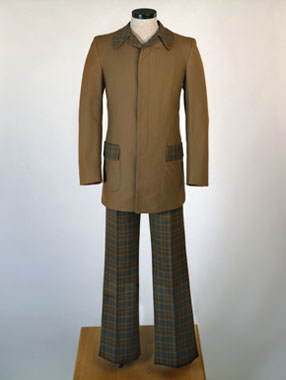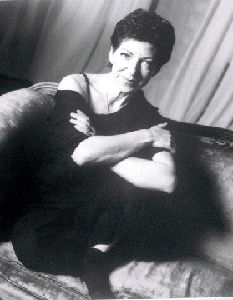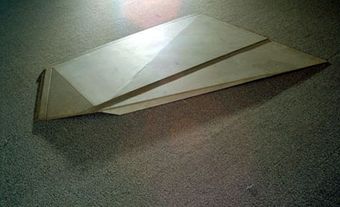The Idea of Authorship
The contemporary concept of fashion design emerged in the mid-nineteenth century, with the widespread acknowledgement of the added commercial and cultural value of individual authorship behind the creation of fashionable clothing. Until then, while dressmakers and tailors were recognized for their expertise in the custom-making of clothing and their knowledge of the latest styles, credit for creative vision was equally attributable to a tasteful client or a supplier of materials.
British-born Charles Frederick Worth is recognized as the originator of the template for the modern fashion designer. In the late 1850s, in creating a wardrobe for the Empress Eugenie of France, Worth was given full creative control, and seized the opportunity to promote himself as an artist and arbiter of new trends. He labelled his garments with his name, as a guarantee of their source and the quality and originality that implied. Worth founded the Chambre syndicale de la couture parisienne, allowing only a select group of Parisians to call their practice haute couture, thereby formalizing a hierarchy of apparel producers with named designers at the top. In fact, the very idea of distinguishing individually authored garments of superior quality and design from the anonymity of mass-produced ready-to-wear was a reaction to the industrialization of clothing production occurring at this time.
Clothing Manufacture in Canada and the Birth of Fashion Design
In Canada, through the middle of the nineteenth century, key developments occurred in the establishment of a clothing industry, which is well documented by the first census of 1871. Canadians whose professions most closely resembled Worth's model of the fashion designer at the time were the dressmakers and tailors who ran relatively small-scale establishments catering to local markets in urban settings. Canadian city directories list significant numbers of dressmakers and tailors until the early twentieth century. Most worked out of shops under their own name, some also selling dry goods, such as fabrics and accessories of dress, or millinery. Large dry-goods businesses also employed dressmakers. Department stores generally incorporated men's tailoring and women's dressmaking departments, supplementing their ready-to-wear assortment with a custom-order business. Eventually many of these tailors, dressmakers, and larger retail businesses began to label their clothing, guaranteeing their authorship, and a degree of exclusivity and quality.
The most well-known creators of fashionable clothing in this period were those who received patronage from Canada's governor general, Frederick Arthur Stanley. These most elite of tailors and dressmakers included the tailor G.M. Holbrook in Ottawa, and dressmakers William Stitt and Co and O'Brien in Toronto. The Montréal ladies' tailor J.J. Milloy was recommended by Lady Stanley (wife of Lord Frederick Arthur STANLEY), who noted that Ottawa had no dressmaker of sufficiently high calibre for her. The influence of these early designers, however, rarely extended beyond their home towns and cities.
Canadian Designers and European Influences
The number of tailors dwindled as bespoke garments were largely replaced by industrially produced menswear in the early twentieth century; a market for custom women's clothing existed for a few more decades. While the designation "fashion designer" was gaining currency, makers of women's clothing were still often referred to as "dressmakers," or "couturières." In the 1920s and 1930s, Madame Martha created couture-quality garments in Toronto, while Ida Desmarais made gowns for Montréalers. In Montréal, Gaby Bernier and Marie-Paule Nolin set up in the 1930s, and were active until the 1950s and 1970s respectively. These local designers had more than just each other as competitors, however, as garments by Parisian couturiers and European fashion designers were imported and sold in Canadian boutiques and department stores, such as Eaton's, Simpson's and Holt Renfrew. At least two Canadian designers had sufficient name recognition to be advertised by department stores. By 1931 Madame Martha could be consulted at Simpson's French Salon in Toronto, which also sold Paris creations. In the 1940s, Marie-Paule Nolin managed her in-store salon and couture workroom of some twenty employees at Holt Renfrew in Montréal.
During the Second World War, with the Paris couture no longer exporting, American fashion designers achieved renown in North America as they were widely promoted by buyers and media. In Canada, opportunities that the wartime context offered for fashion design to come into its own were also recognized. Toronto's Madame Martha proposed that Canadian designers prepare to develop an export market to the United States immediately post-war, before France could reestablish itself. A promotional film on Canadian fashion designers was released in 1946; however, widely-distributed Canadian designers with name recognition did not emerge in this period as they did in the United States.
Post-War Period Brings Industry Consolidation
By 1947, when the French couture rebounded and received media attention as the gold standard of fashion design, manufacturers as well as custom dressmakers everywhere produced copies and knock-offs at all levels of quality. From the 1950s through the late 1960s, Canada's entire fashion industry became increasingly design-oriented; manufacturers found that the growth of cheap imports from Asia and the US directed them into a higher style and quality market niche, for both the large Canadian and smaller export markets. Those who deemed themselves "fashion designers" now encompassed a broader range of higher-end women's clothing manufacturers.
Although in post-war Canada far fewer designers opted to remain working along the lines of the couture model, by the 1950s a group of them realized that a recognizable design identity and media presence for Canadian-made garments would enable them to make an impact on a wider market. They founded the Association of Canadian Couturiers in Montréal in 1954, under president Raoul-Jean Fouré, who had established his business in Montréal in the late 1920s. That year the group produced the first all-Canadian fashion show in New York, and from thereon in, the Association presented fashion shows in major Canadian cities twice a year, with the assistance of government and textile manufacturers. Among the better-known members were Montréal's Jacques de Montjoye and Toronto's Federica. The group disbanded in 1968.
In the 1960s several new Canadian designers managed to reach beyond their local spheres with a different strategy, by simultaneously doing custom business for private clients, and teaming up with established garment manufacturers to produce high-end ready-to-wear lines under their own names. Among them were Michel Robichaud and Marielle Fleury, who quickly became figureheads of Canadian fashion design when their collections toured Europe to draw attention to Montréal's EXPO 67.
Canadian Name Designers Achieve National Fame
Robichaud and Fleury along with a larger group founded the Fashion Designers Association of Canada in 1974, to promote recognition of individual designers as well as create public awareness of the contribution of fashion design to the Canadian economy and cultural life. Other members whose careers had significant longevity included Montréalers Léo Chevalier and John Warden, and Toronto designers Pat MCDONAGH, Claire Haddad, Marilyn BROOKS, and Elen Henderson. The group presented seasonal fashion shows in Montréal and Toronto until it disbanded in 1980. Regional associations continued through the 1980s and 1990s with similar mandates for the exposure of independent designers. Such associations aimed their efforts at marketing the more inventive and exclusive qualities of designer clothing, to distinguish it from the offerings of larger-scale apparel manufacturers.
Recognition Outside of Canada's Borders
The export market for Canadian clothing, which developed slowly through the 1970s and 1980s before booming in the 1990s, has been a significant factor in increasing the renown of Canadian designers outside Canada. An early example of significant global reach was the Parachute line, under design team Nicola Pelly and Harry Parnass, which was found in five hundred points of sale around the world through the 1980s and 1990s.
Through the last decades of the twentieth century and into the twenty-first, many Canadian fashion designers have enjoyed outstanding longevity in the field, and developed significant reputations. Torontonian Alfred SUNG's name has appeared on a variety of labels; his designs were initially featured in Club Monaco, a retail chain which expanded internationally. Montréal's Jean-Claude POITRAS signed a number of men's and women's lines throughout the 1980s and 1990s. Simon CHANG, whose design career began in the 1970s, has been one of the most commercially successful Canadian fashion designers. Hilary RADLEY has built a reputation on coat design, as has Linda LUNDSTRÖM. Wayne CLARK, with a reputation for elegant evening dresses, has been active since the 1970s.
Among the best-known designers in Canada today who have enjoyed lengthy careers are Toronto's Lida BADAY, active since 1987, COMRAGS, which got its start in the 1980s, and Joeffer CAOC, David Dixon, and Hoax Couture, who have all been designing since the mid-1990s. Vancouver-based Yumi Eto, now director of design for Aritzia, received international recognition under her own label. High-profile designers in Montréal include Philippe DUBUC, who began his high-end ready-to-wear men's line in 1993, and Marie SAINT PIERRE, who has enjoyed over twenty years as a high-profile independent designer of women's clothing. Montréal's Denis Gagnon gained recognition with an exhibition devoted to his work at the MUSÉE DES BEAUX-ARTS DE MONTRÉAL in 2010.
The Toronto-based Fashion Design Council of Canada holds LG Fashion Week in Toronto twice a year. It is billed as the premier vehicle for branding and promoting designer fashion in Canada, and is primarily funded by sponsorship. In Montréal, Sensation Mode promotes designers through Montréal Fashion Week, also twice a year, which receives public funding as well as private sponsorship. These events showcase the work of up-and-coming designers and ensure continuing media and international buyer attention to Canadian fashion design.
See also CLOTHING INDUSTRIES and TEXTILE INDUSTRY.

 Share on Facebook
Share on Facebook Share on X
Share on X Share by Email
Share by Email Share on Google Classroom
Share on Google Classroom








